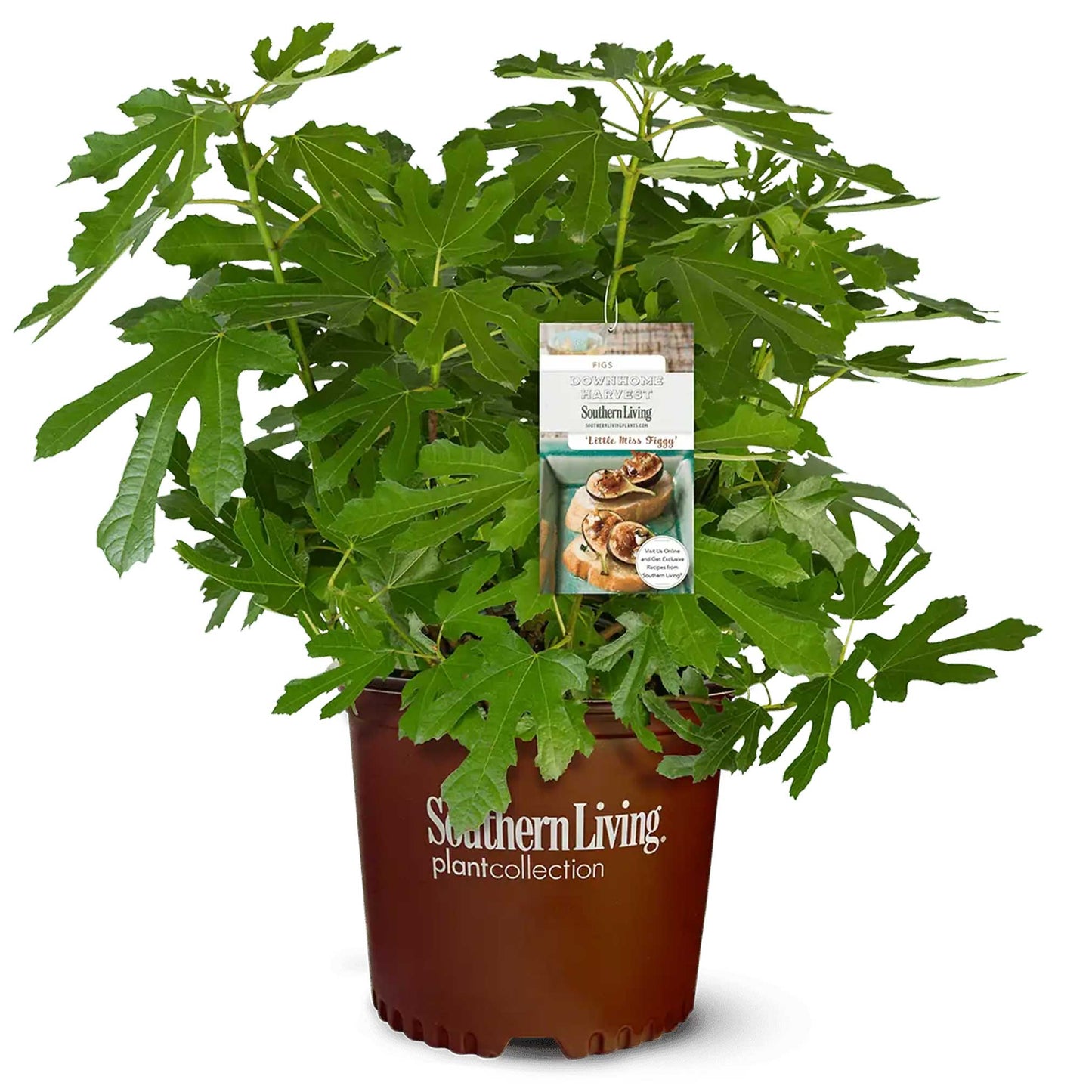Fig Orchard Pack
Fig Orchard Pack
SKU:EDB-FIG-POL-NA-NA
Fig Orchard Pack: Your Miniature Orchard Awaits
Embark on a flavorful journey with our Fig Orchard Pack, a meticulously curated collection of fig varieties that promise to bring a burst of sweetness and a touch of the Mediterranean to your garden. This pack includes the Chicago Hardy Fig, Little Miss Figgy, and Brown Turkey Fig, each offering its unique taste and growth attributes.
Chicago Hardy Fig: The Winter Warrior
The Chicago Hardy Fig is a robust variety that braves the cold, bringing you sweet, plump figs even in cooler climates. Ideal for northern gardeners craving a taste of the exotic.
Little Miss Figgy: The Petite Powerhouse
Meet Little Miss Figgy, the compact dynamo of the fig world. With her small stature, she's perfect for container gardening or small spaces, without compromising on the size or sweetness of her delectable fruits.
Brown Turkey: The Reliable Bounty
Rounding out the pack is the Brown Turkey Fig, a prolific producer known for its resilience and reliability. Enjoy a generous harvest of large, flavorful figs that are perfect for both fresh consumption and culinary creations.
Why Choose the Fig Orchard Pack?
- Diverse Flavors: Experience a range of fig flavors and textures, from intense sweetness to robust heartiness.
- Extended Harvest: With different maturing times, enjoy fresh figs throughout the season.
- Versatile Planting: Perfect for planting in-ground or in containers, making it suitable for gardens of all sizes and even indoor spaces.
- Easy to Grow: Figs are known for their low maintenance and drought tolerance, making them ideal for both novice and experienced gardeners.
Transform your garden into a personal orchard with our Fig Orchard Pack. Whether you're a seasoned fruit grower or a curious newbie, these fig varieties will enchant your taste buds and beautify your outdoor space. Embrace the joy of homegrown sweetness and savor the fruits of your labor, one delicious fig at a time.



Product Details
-
Product Category
Edibles
-
Product Subcategory:
Figs
-
Botanical Name:
Ficus carica 'Brown Turkey', Ficus carica 'Chicago Hardy', Ficus carica ‘Little Miss Figgy’ PP27929
-
Does Not Ship To:
AZ, OR
-
Mature Height:
8-20 ft.
-
Mature Width:
8-15 ft.
-
Growing Zone:
7-10 outdoors
-
Indoor Growing:
-
Sunlight:
Full-Part Sun
-
Growth Rate:
Moderate
-
Harvest Time:
June-August
-
Bloom Time:
Spring

Planting Directions
<h2>Fig Orchard Pack Planting & Care</h2>
<ul>
<li>Plant in spring or fall in well-draining soil, 20 feet apart.</li>
<li>Choose a sunny spot (6+ hours of sunlight).</li>
<li>Dig a hole twice the width of the root ball, place the plant, and backfill with soil.</li>
<li>Water thoroughly after planting.</li>
<li>Mulch to retain moisture and regulate soil temperature.</li>
<li>Fertilize annually with a balanced fertilizer in spring.</li>
<li>Prune in late winter to shape and remove dead wood.</li>
<li>Water weekly, more during dry spells.</li>
</ul>

FAQs
<h2>Fig Orchard Pack FAQ</h2>
<h3>1. What are the main differences between the fig varieties included in the Fig Orchard Pack?</h3>
<ul>
<li><strong>Chicago Hardy:</strong> As the name suggests, this variety is extremely cold hardy, making it ideal for gardeners in cooler climates. It produces sweet, medium-sized figs that are perfect for eating fresh or drying.</li>
<li><strong>Little Miss Figgy:</strong> A more compact variety, suitable for container growing or small spaces. Despite its smaller size, it produces an abundant crop of sweet figs.</li>
<li><strong>Brown Turkey:</strong> Offers reliability and a very productive harvest of large, sweet figs with a mild flavor, ideal for all purposes including fresh eating, drying, and cooking.</li>
</ul>
<h3>2. Can I grow these fig trees in containers, and if so, what are the benefits?</h3>
<p>Yes, all these varieties can be grown in containers, especially the Little Miss Figgy due to its compact size. Growing figs in containers allows for better control over the growing conditions, like soil quality and watering, and makes it easier to protect the trees from extreme weather conditions. Container growing is also a boon for those with limited space or unsuitable soil.</p>
<h3>3. How do I ensure my fig trees pollinate properly when grown together?</h3>
<p>Good news: fig trees are self-pollinating! This means you don't need to have multiple trees for pollination to occur. However, planting them close together can increase your chances of a bountiful harvest due to the increased presence of pollinators, like bees, in your garden.</p>
<h3>4. When can I expect to start harvesting figs from these trees?</h3>
<p>Patience is key with fig trees. Typically, you can expect to start seeing fruit in 2-3 years after planting. However, growth and fruiting times can vary based on your climate, soil conditions, and how well the tree is cared for. Remember, the wait is worth it for the delicious fruits!</p>
<h3>5. Are there any specific care tips for these fig varieties to thrive?</h3>
<p>While each variety has its nuances, some general care tips include:</p>
<ul>
<li><strong>Location:</strong> Choose a sunny spot with at least 8 hours of direct sunlight.</li>
<li><strong>Watering:</strong> Keep the soil consistently moist but not waterlogged, especially during the growing season.</li>
<li><strong>Pruning:</strong> Prune in late winter to remove any dead or diseased branches and to shape the tree.</li>
<li><strong>Fertilizing:</strong> Apply a balanced, slow-release fertilizer in early spring to support healthy growth and fruit production.</li>
</ul>




